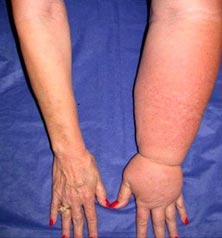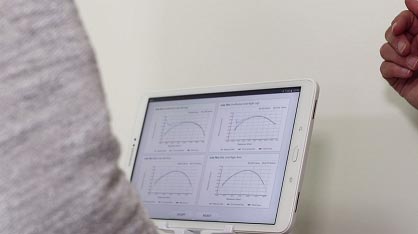EARLY DETECTION AND INTERVENTION REDUCES BREAST CANCER RELATED LYMPHEDEMA
If you are someone who has recently been diagnosed with breast cancer, are preparing to undergo or have just completed treatment, including chemotherapy, surgery, and/or radiation therapy, there is something important you need to be prepared for.
I'm Kate Perkins, Lymphoedema trained Occupational Therapist. I focus on helping women who have had breast cancer treatment recover their strength and movement to enable them to return to doing daily activities and the things they love doing faster.
You may expect pain symptoms following surgery, fatigue associated with chemotherapy and/or radiation therapy, or restricted movement due to surgical and radiation scarring, but one of the biggest problems you may be at risk of developing is Breast Cancer Related Lymphoedema. In this article I will explain what this is and the latest technology that helps us detect the early development of this condition before it becomes chronic and impacts on your quality of life.
Breast Surgeon, Dr Mary Ling, and I talk here about the importance of early detection and intervention for Breast Cancer Related Lymphoedema. (Embed Link)
I am passionate about the early detection and prevention of Breast Cancer Related Lymphoedema. Why? Lymphoedema is a silent creeper, can become a lifelong condition, and can significantly impact on your quality of life. It is preventable!
WHAT IS BREAST CANCER RELATED LYMPHOEDEMA?
Breast cancer related lymphoedema (BCRL) can occur anytime following breast cancer treatment. Breast cancer treatment can be defined as surgery to remove lymph nodes, lumpectomy, mastectomy, and adjuvant treatments including chemotherapy and radiation therapy. The risk of BCRL occurrence can vary widely, with noted rates up to 50% following radiation therapy and taxane based chemotherapy. *
HOW CAN BCRL BE DETECTED?
At Lymphatic Solutions, we use the SOZO by Impedimed, the latest in Bioimpedence technology to measure and monitor the extracellular fluid (fluid within the tissue) of the at-risk limb/s. The only one of its kind on the Central Coast. Electrodes under the hand and foot plates sends 256 slow electric currents through the body to produce an L-Dex score. The measurements are taken in standing, with clothes on, and takes just 30 seconds.
WHY DOES EARLY DETECTION MATTER?
You are about to undergo treatment for breast cancer, or are recovering now, which is a significant life changing and challenging event. Post breast cancer rehabilitation is challenging enough without developing a potentially lifelong chronic condition like lymphoedema.
When you book in for your pre-breast cancer treatment baseline L-Dex measurement, education regarding post breast cancer treatment rehabilitation is also provided. Ongoing L-Dex measurements of the arms, shoulder range of movement measurements are recorded and will be monitored throughout your recovery phase.
When you work with me, scar management treatment can reduce restricted movement post surgery and radiation therapy. Participation in a prescribed exercise program can increase your strength and endurance to perform your normal daily activities and enable you to return to doing the things you love faster.
WHAT IF I ALREADY HAVE LYMPHOEDEMA?
If you are experiencing early signs or symptoms of lymphoedema, it is not too late to get an L-Dex measurement and be assessed for treatment.
WHAT NEXT?
Contact us at Lymphatic Solutions for an appointment.
* Further Reading:
Whitworth PW, Cooper A. Reducing chronic breast cancer-related lymphedema utilizing a program of prospective surveillance with bioimpedance spectroscopy. The Breast Journal, 2018.Ridner S, Dietrich MS, et al. A Prospective Study of L-Dex® Values In Breast Cancer Patients Pre-treatment and Through Twelve Months Post-operatively. 2018


